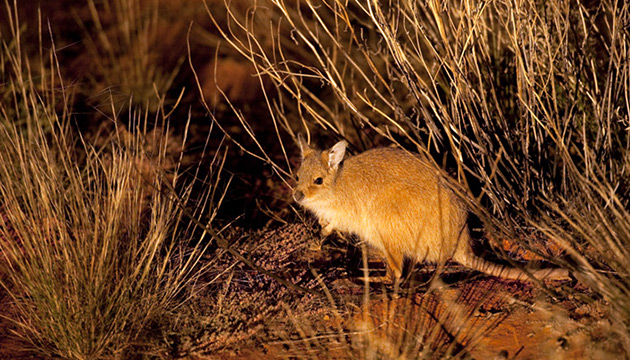Thanks to some special wildlife enclosures, one of Australia’s endangered mammals is clinging to existence.
Story By Kerry Sharp
Under the cover of darkness, Alice Springs Desert Park Indigenous guide Doug Taylor ushers a group of wildlife watchers through the security gate of a heavily fortified enclosure holding one of Australia’s endangered mammals – the rufous hare-wallaby, or mala. Inside, the visitors share the extraordinary privilege of watching this pint-sized desert marsupial chewing on native grass clumps and hopping among its fellow vulnerable desert dwellers, unperturbed by the glare of an infra-red beam.
At the start of the 20th century mala were abundant across spinifex sandplains, but their numbers were decimated by feral cats, foxes and wildfire. During South Australian conservationist Hedley Herbert Finlayson’s early 1930s desert expeditions, mala were reasonably common, but exceedingly rare when he returned just 20 years later.
In 1960 ecologist Dr Alan Newsome reportedly noticed unfamiliar fresh animal tracks in the Tanami Desert. Four years later, tests on a skull bone found there presented indisputable proof that Lagorchestes hirsutus was still alive – at least in one remnant mainland colony. This exciting find gave rise to a mala recovery campaign that’s evolved through 50 years of triumphs and heartbreak.
This Story is from Issue #107
Outback Magazine: Jun/July 2016









